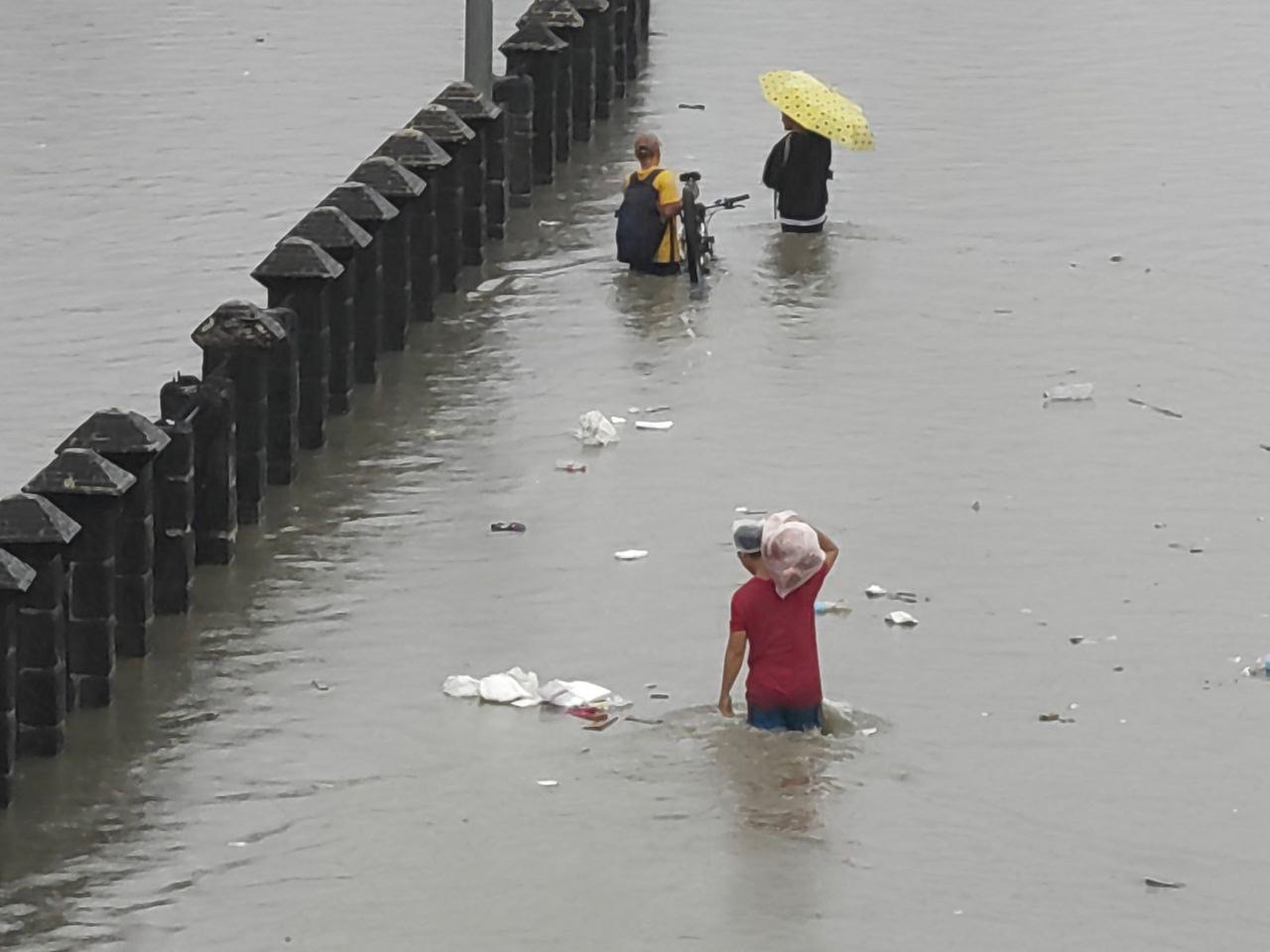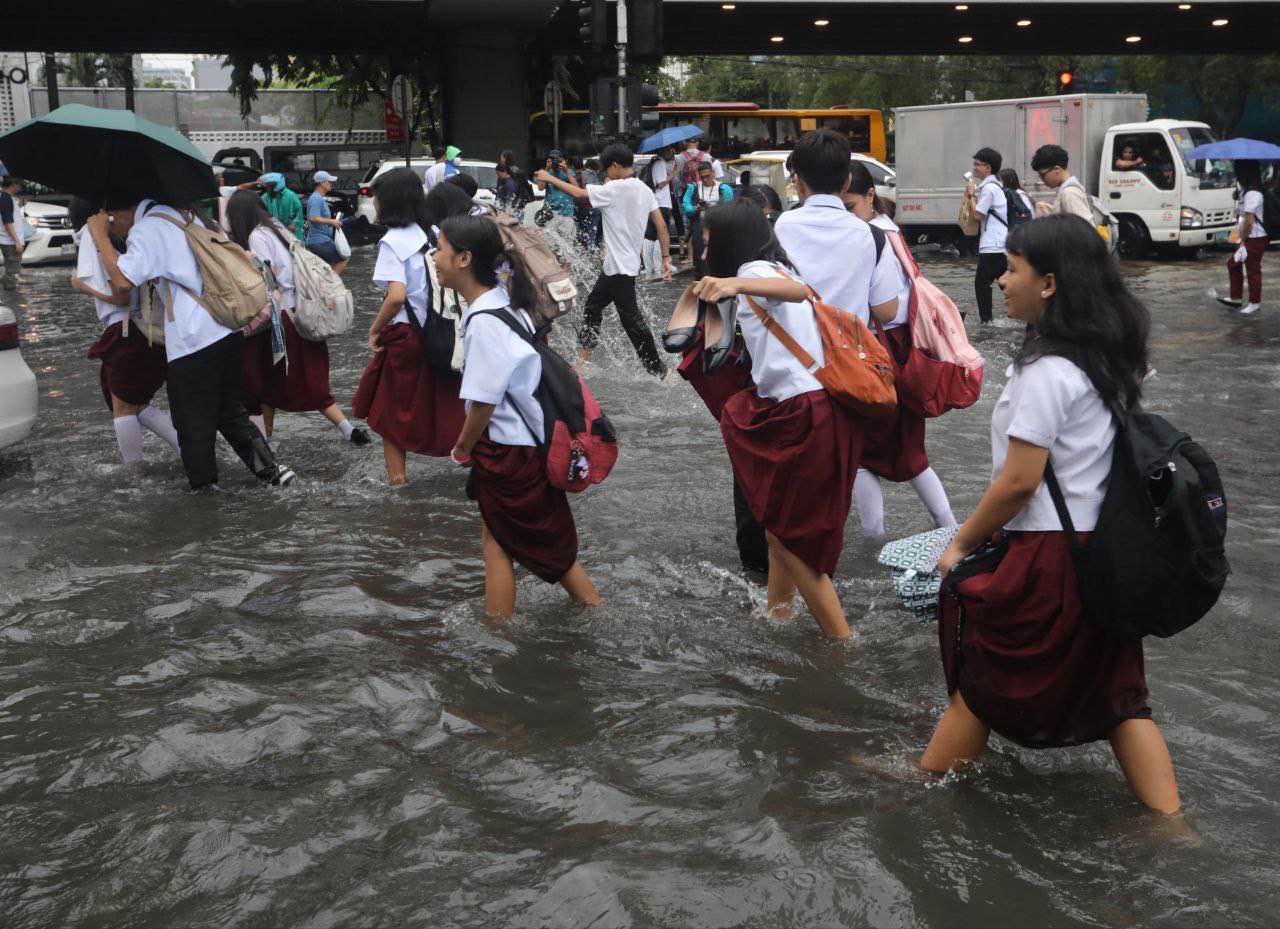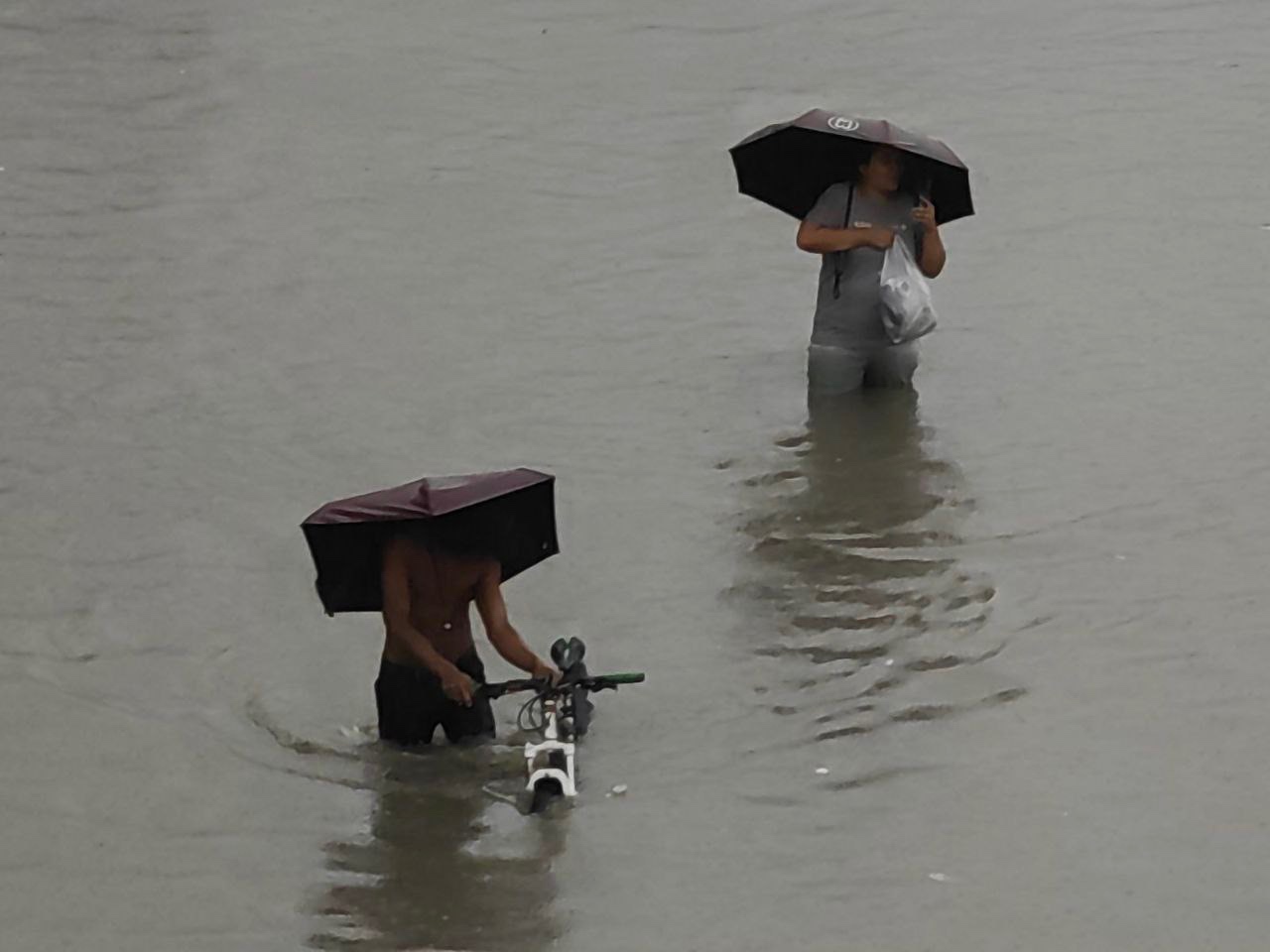Did you come into contact with floodwaters? Here’s how to keep yourself safe from infectious diseases
The southwest monsoon or habagat continues to bring severe flooding across the Philippines, mostly in different parts of Luzon.
Commuters and motorists were left stranded in certain areas, prompting government agencies to offer free MRT and LRT rides on July 21 as well as deploy buses and trucks for “libreng sakay” on July 22 to help them reach their homes safely. Some roads were rendered impassable to vehicles due to high-level flooding, leaving others with no choice but to brave gutter- to thigh-deep waters in cities like Manila and Las Piñas as well as chest-deep waters in Imus, Cavite and Marulas, Valenzuela, among others.

PAGASA, in its 4 p.m. bulletin on July 22, said that moderate to heavy rains are expected in Metro Manila and other Luzon areas until Wednesday, July 23.
Did you come into contact with floodwaters in the past days? Or were you one of those who had to wade through massive floods amid the heavy downpour? It's important to keep in mind that these come with health risks, which are mainly associated with infectious diseases.
Possible infectious diseases in flood disasters
According to Dr. Emmeline Borillo, who specializes in adult infectious diseases, flood-related illnesses are usually caused by microorganisms acquired through water contamination.
Among the most common is leptospirosis, which is caused by direct contact with urine or ingestion of tissue of infected animals—usually rats and rodents. "Symptoms range from simple flu-like conditions to a more severe form called Weil’s Disease, which manifests as kidney failure and respiratory failure with a high mortality rate," she said in an interview with PhilSTAR L!fe.
Dr. Arthur Dessi E. Roman, an infectious disease specialist at Research Institute for Tropical Medicine, told L!fe that coming into contact with floodwaters can lead to dengue, "especially when areas remain flooded with water and remain stagnant."
He added that it can likewise cause typhoid fever, cholera, diarrhea, intestinal parasites, and even skin infections.

Per Borillo, typhoid fever and cholera are water-borne diseases. "This means that they are usually caused by contamination of clean or potable water due to floods. They manifest as acute gastroenteritis, and it may cause prolonged fever and severe dehydration if not treated promptly," she noted.
Keeping yourself safe and healthy
While it's best to stay at home during heavy rains, some people still have to go out to work or run important errands.
If that's the case, Roman suggested wearing the right gear like boots, rubber gloves, and even goggles to minimize exposure to floodwaters.
After braving them, the infectious disease expert advised washing affected areas of your body with soap and water.
"Examine areas for presense of cuts and wounds," he added. "If any, apply antiseptics like povidone iodine or chlorhexidine."

According to Borillo, leptospirosis can be prevented through rodent control and by taking chemoprophylaxis with doxycycline with a physician's order.
It’s also important to make sure that your source of drinking water is safe to avoid water-borne infectious diseases. “This applies to what you cook and what you drink,” she emphasized.
Still, Roman stressed that the best thing you can do after exposure is to consult a doctor. "To ensure your physical health, they may initiate prophylactic drugs against leptospirosis or give you immediate antibiotic treatment if there is any skin infection," he said.


